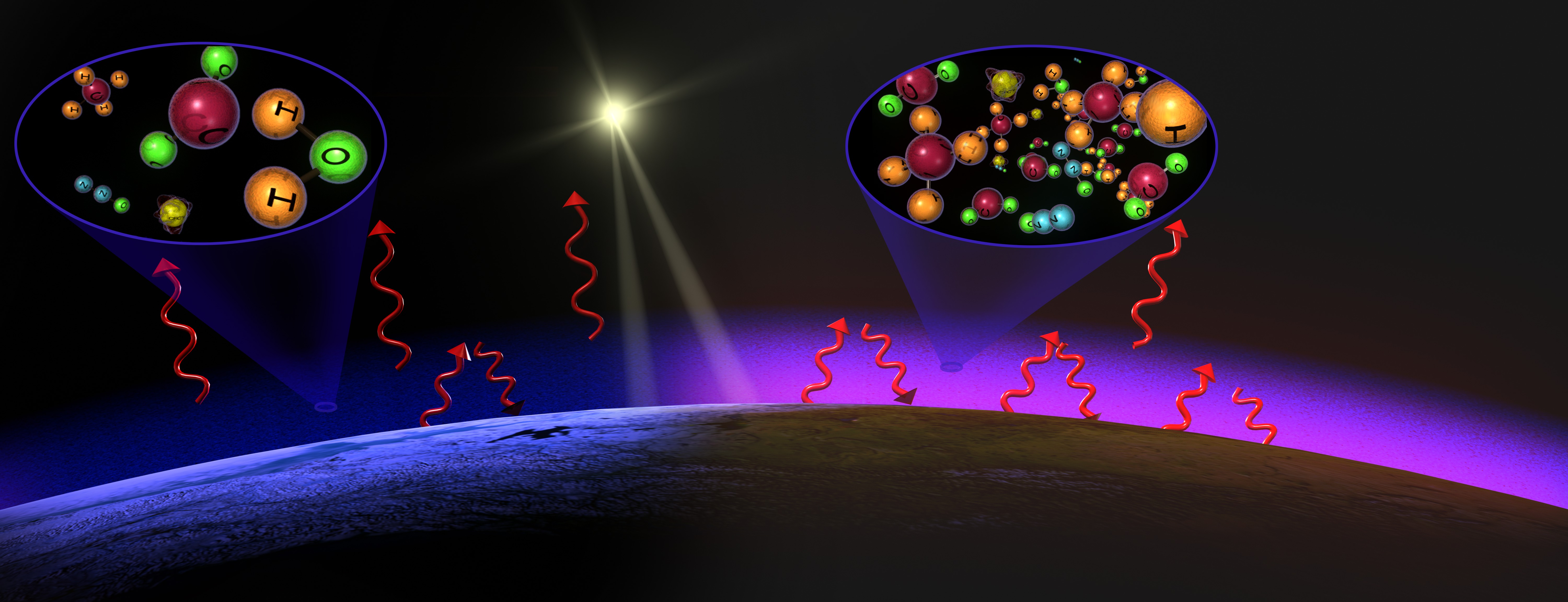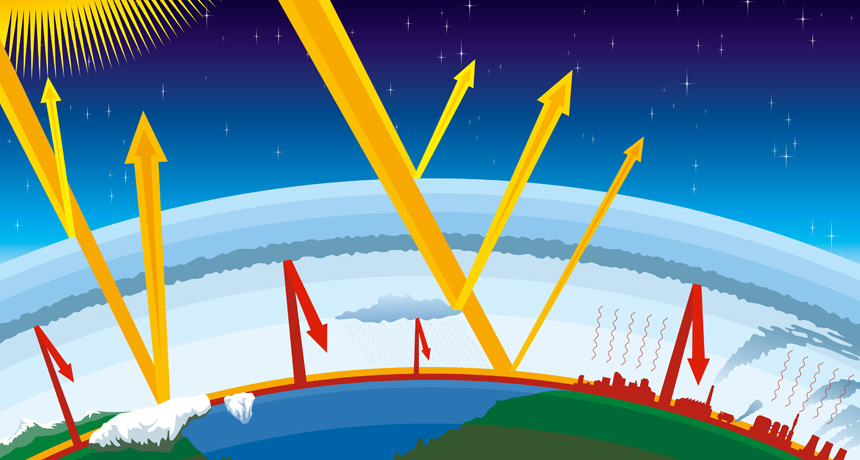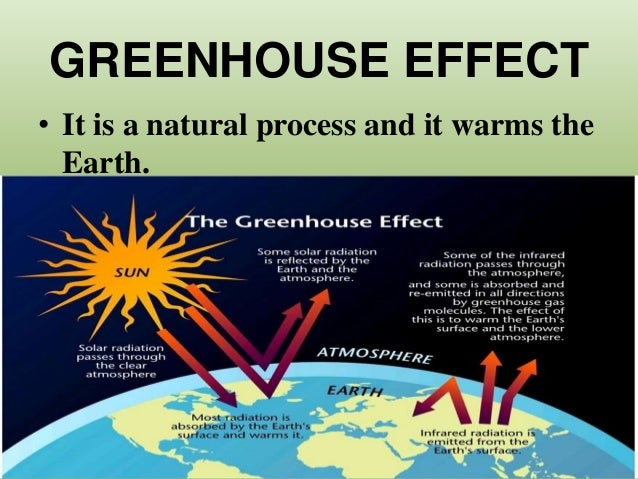That approach in effect makes carbon dioxide, CO 2, the prevailing "currency" of greenhouse gases and global warming Let's consider the principal GHGs one at a time, starting with water vapor, the most abundant greenhouse gas in the atmosphere according to NOAA's National Climatic Data Center (NCDC)The contributions of downwelling IR from greenhouse gases to warming the planet are called the greenhouse effect To be honest, the names "greenhouse effect" and "greenhouse gases" are pretty unfortunate, because the processes at The increase of greenhouse gas concentration (mainly carbon dioxide) led to a substantial warming of the earth and the sea, called global warming In other words The increase in the manmade emission of greenhouse gases is the cause for global warming For the effects of global warming see below Effects of global warming

Cilab Greenhouse Gases Effect On Global Warming
Greenhouse gas effect and global warming upsc
Greenhouse gas effect and global warming upsc-An IPCC Special Report on the impacts of global warming of 15°C above preindustrial levels and related global greenhouse gas emission pathways, in the context of strengthening the global response to the threat of climate change, sustainable development, and efforts to eradicate poverty MassonDelmotte, V, P Zhai, HO Pörtner, D Five Major Greenhouse Gases The most significant gases that cause global warming via the greenhouse effect are the following Carbon Dioxide Accounting for about 76 percent of global humancaused




Greenhouse Gases Global Warming Climate Change Blog
Increased greenhouse gases from human activities result in climate change and ocean acidification Climate change = ocean change The world's ocean is a massive sink that absorbs carbon dioxide (CO 2) Although this has slowed global warming, it is also changing ocean chemistry Climate change dramatically affects coral reef ecosystems The greenhouse effect, in turn, is one of the leading causes of global warming The most significant greenhouse gases, according to the Environmental Protection Agency (EPA), are water vapor (H2OGlobal warming global warming Radiative forcing In light of the discussion above of the greenhouse effect, it is apparent that the temperature of Earth's surface and lower atmosphere may be modified in three ways (1) through a net increase in the solar radiation entering at the top of Earth's atmosphere, (2) through a change in the fraction of the radiation reaching the surface,
Understanding how global warming occurs is a critical step toward believing it's real, the researchers concluded The greenhouse gas effect describes how greenhouse gases – such as carbon dioxide, water vapor and methane – act like a blanket, absorbing energy from the sun and trapping warm air in the earth's atmosphereGlobal warming global warming Carbon dioxide Of the greenhouse gases, carbon dioxide (CO2) is the most significant Natural sources of atmospheric CO2 include outgassing from volcanoes, the combustion and natural decay of organic matter, and respiration by aerobic (oxygenusing) organisms These sources are balanced, on average, by a set of physical, chemical, orBasic EarthSun Geometry Fig 35 Annual Radiation Surplus and Deficit as a Function of Latitude Greenhouse Effect Climate Change Global Warming READ Somerville Chapter 3 Is the Greenhouse Effect Real?
Carbon dioxide (CO 2) and other greenhouse gases act like a blanket, absorbing IR radiation and preventing it from escaping into outer spaceGlobal Warming It is the process by which absorption and emission of infrared radiation by atmospheric gases warm a planet's lower atmosphere and surface Naturally occurring greenhouse gases have a mean warming effect of about 33 °C (59 °F),Global warming is associated with the greenhouse effect that is produced when the Earth's surface and atmosphere absorb solar energy and reradiates the energy back into space A portion of the absorbed energy is emitted by land and oceans, absorbed by the Earth's atmosphere, and reradiated back to the Earth




Explainer Global Warming And The Greenhouse Effect Science News For Students




Carbon Dioxide Methane Nitrous Oxide And The Greenhouse Effect Conservation In A Changing Climate
The increased greenhouse effect is causing changes in our planet that can affect our lives The major Greenhouse Gas, carbon dioxide, emitted naturally and by the burning of fossil fuels, stays in the atmosphere a long time Its warming effect occurs even when the sky is clear and dry Climate scientists are so concerned about carbon dioxide The global problem Shrinking livestock's carbon hoofprint worldwide is a big challenge Livestock are responsible for 145 percent of global greenhouse gases India, for example, has the world's largest cattle population, but the lowest beef consumption of any country As a result, cows live longer and emit more methane over their lifetimeFgases are often used as substitutes for ozonedepleting substances, because they do not damage the atmospheric ozone layer However, Fgases are powerful greenhouse gases, with a global warming effect up to 23 000 times greater than carbon dioxide (CO 2), and their emissions are rising strongly The emissions of Fgases in the EU almost doubled from 1990 to 14 – in




Greenhouse Gases Global Warming Ppt Download




Co2 The Greenhouse Effect And Global Warming From The Pioneering Work Of Arrhenius And Callendar To Today S Earth System Models Sciencedirect
The Greenhouse Effect Human activities contribute to global warming by increasing the greenhouse effect The greenhouse effect happens when certain gases—known as greenhouse gas es—collect in Earth's atmosphereReleasing greenhouse gases intensifies the greenhouse effect, and increases Earth's average air temperatures (also known as global warming) Hover over or click on the icons to learn more about these human causes of change and how they influence the greenhouse effectAn increase in the atmospheric concentrations of greenhouse gases produces a positive climate forcing, or warming effect From 1990 to 19, the total warming effect from greenhouse gases added by humans to the Earth's atmosphere increased by 45 percent The warming effect associated with carbon dioxide alone increased by 36 percent




Greenhouse Effect Global Warming Definition Solution Facts



1
Without greenhouse gases in the atmosphere (CO2 and H2O) the Earth would be about 33 degrees cooler than at present The average globalHence these gases are known as greenhouse gases and the heating effect is known as greenhouse effect Oxides of Nitrogen with general formula NO x – NO, NO 2 – Nitrogen oxide, Nitrogen dioxide etc are global cooling gasses while Nitrous oxide (N 2 O) is a greenhouse gasGreenhouse gases have very different warming effects one tonne of methane does not have the same impact on warming as one tonne of CO 2Carbon dioxide equivalents (CO 2 e) attempt to convert the warming impact of the range of greenhouse gases into a single metric This is done by multiplying each gas by its 100year 'global warming potential' value the amount of warming




Greenhouse Effect And Global Warming




The Greenhouse Effect And The Global Warming Global New Light Of Myanmar
Recent research indicates that global albedo is fairly constant, and having no material effect on global temperatures Local effects may be more pronounced Loss of albedo in the Arctic could heat the water sufficiently to release methane stored in ice crystals called clathrates (Methane is a greenhouse gas far more potent than CO2)A stronger greenhouse effect will warm the ocean and partially melt glaciers and ice sheets, increasing sea level Ocean water also will expand if it warms, contributing further to sea level rise Outside of a greenhouse, higher atmospheric carbon dioxide (CO 2) levels can have both positive and negative effects on crop yieldsReply "Forget the CO2 Water vapor is the most important greenhouse gas It controls the Earth's temperature" It's true that water vapor is the largest contributor to the Earth's greenhouse effect On average, it probably accounts for about 60% of the warming effect




Greenhouse Gases A Student S Guide To Global Climate Change Us Epa




Difference Between Global Warming Climate Adaptation Greenhouse Gases Effect



0 件のコメント:
コメントを投稿